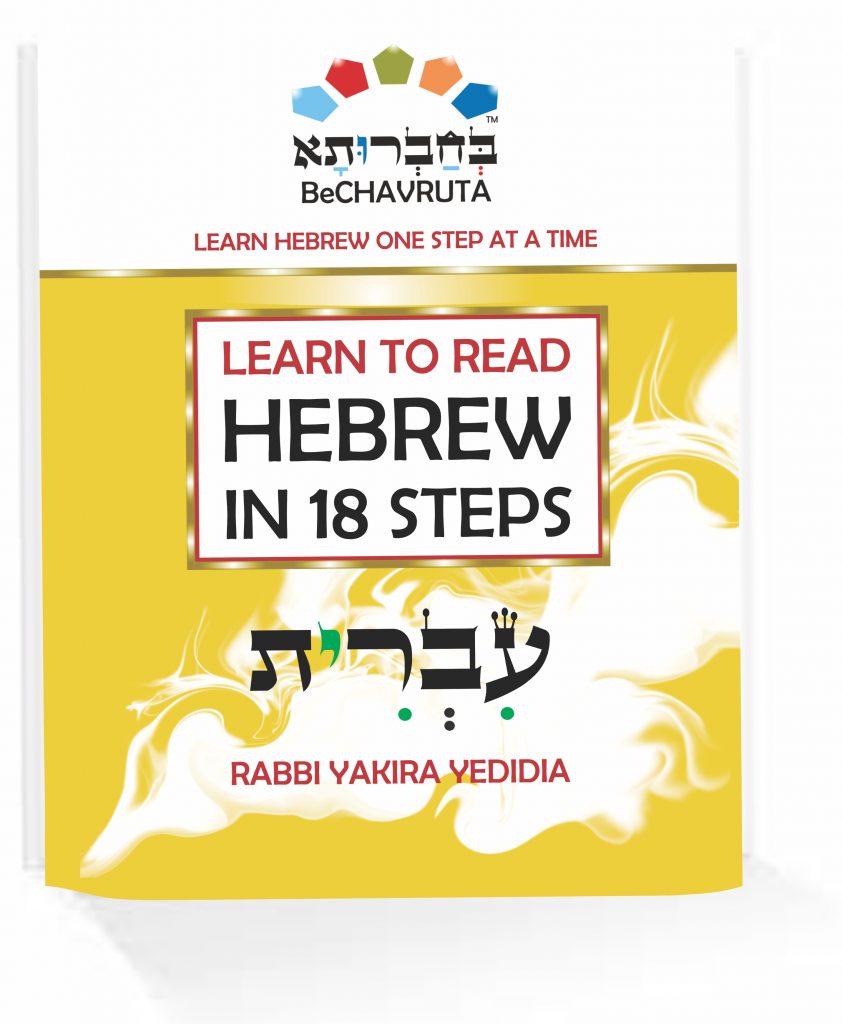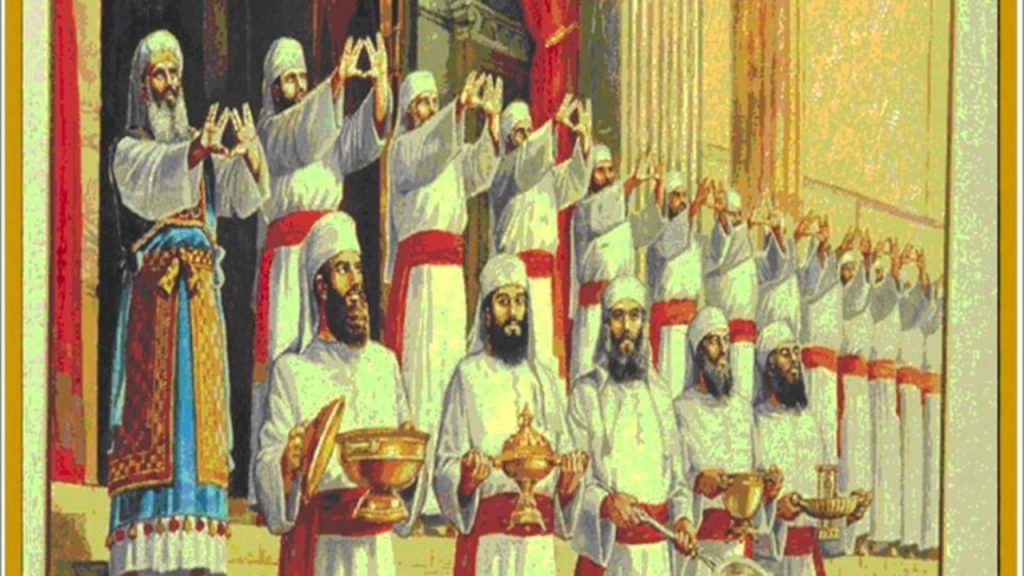In a nutshell
At the end of parashat Balak, Pinchas, Aharon’s grandson, kills Zimri, the Nassi of shevet Shimon, who publicly takes a Midianite princess into a tent, Pinchas kills them both, attempting to stop the plague raging among the people. He is rewarded for his act, as G‑d grants him a covenant of peace and the priesthood.
Mosheh is instructed on how the Land is to be divided among the tribes of Israel.We also learn about the five daughters of Zelophehad’s successful plea for land rights.
Joshua is chosen and empowered by Mosheh to succeed him and lead the people into the Land of Israel.
As the parashah sets out laws for the Jewish holidays, listing the daily offerings, and the additional offerings brought on Shabbat, Rosh Chodesh (first of the month), and the festivals of Passover, Shavuot, Rosh Hashanah, Yom Kippur, Sukkot and Shemini Atzeret, Jews read parts of this parashah as Torah readings during many Jewish holidays.
Why was Mosheh not allowed to enter the Promised Land?
In parashat Bamidbar, Bnei Israel were counted a month after the Mishkan was dedicated. Now, almost forty years later, Mosheh is being asked to count Bnei Israel yet again.
In Deuteronomy 32:51–52 God gives the reason that Mosheh was not permitted to enter the Promised Land: “This is because . . . you broke faith with me in the presence of the Israelites at the waters of Merivah Kadesh in the Desert of Zin and because you did not uphold my holiness among the Israelites. Therefore, you will see the land only from a distance; you will not enter the land I am giving to the people of Israel.” Mosheh saw the Promised Land from afar, but was not allowed to enter.
The Water of Merivah
The incident at the waters of Merivah, in Kadesh barnea, is recorded in Numbers 20. Nearing the end of their forty years of wandering, the Israelites came to the Desert of Zin. Miriam died, and there was no water, and the community turned against Mosheh and Ahron. God told them to gather the assembly and speak to the rock and water will come forth. Mosheh took the staff and angrily struck the rock twice with his staff (Numbers 20:10–11). Water came from the rock, as God had promised. But God immediately told Mosheh and Ahron that, because they failed to trust Him, they would not bring the children of Israel into the Promised Land.
I always felt that the punishment was too harsh. True, Mosheh disobeyed a direct command from God, being asked to speak to the rock and instead, he struck the rock with his staff. What about all the good things he did? What about second chances? What about forgiveness? I’m still trying to reason with this story.
God allowed Mosheh, before he died at Mount Nevo (located directly east of Jerusalem), to view the broad panorama of the land inheritance he swore to give the descendants of Avraham, Yitzchak, and Yaacov (Deuteronomy 34:4-5). After the death of Mosheh his body was buried by the Eternal in a special place no one would be able to find.

ORDER RABBI YAKIRA NEW BOOK “LEARN TO READ HEBREW IN 18 STEPS”
1O MITZVOT IN PARASHAT PINCHAS
| 1. Carry out the laws of the order of inheritance Num. 27:8 |
| 2. To offer two lambs every day Num. 28:3 |
| 3. To bring two additional lambs as burnt offerings on Shabbat Num. 28:9 |
| 4. To bring additional offerings on Rosh Chodesh (“” The New Month””) Num. 28:11 |
| 5. To bring additional offerings on Passover Num. 28:19 |
| 6. To bring additional offerings on Shavuot Num. 28:26 |
| 7. To bring additional offerings on Rosh Hashana Num. 29:2 |
| 8. To bring additional offerings on Yom Kippur Num. 29:8 |
| 9. To bring additional offerings on Sukkot Num. 29:13 |
| 10. To bring additional offerings on Shmini Atzeret Num. 29:35 |
The 613 Mitzvot
The commandment of the tzitzit. The word tzitzit is related to the root word lehatzitz- to look, therefore a tzitzit is an object at which we look . In addition, the word tzitzit numerical value is 600. The tzitzit has 8 threads and 5 double knots in each corner (8+5=13), thus a tzitzit represents the 613 mitzvot in the Torah.
In The Torah there are 613 commandments, mitzvot, also known as the Law of Moses (תרי״ג מצוות, taryag mitzvot). The 613 mitzvot are first recorded in the 3rd century CE, when Rabbi Simlai mentioned it in a sermon that is recorded in Talmud Makkot 23b.
The 613 commandments include 248 “positive commandments”, to perform an act (mitzvot aseh), and 365 “negative commandments”, to abstain from certain acts (mitzvot lo taaseh). The negative commandments number 365, which coincides with the number of days in the solar year, and the positive commandments number 248, a number ascribed to the number of bones and main organs in the human body.
Though the number 613 is mentioned in the Talmud, its real significance increased in later medieval rabbinic literature, including many works listing or arranged by the mitzvot. The most famous of these was an enumeration of the 613 commandments by Maimonides, The Rambam.
Many of the mitzvot cannot be observed now, following the destruction of the Second Temple, although they still retain religious significance. According to one standard reckoning, there are 77 positive and 194 negative commandments that can be observed today, of which there are 26 commands that apply only within the Land of Israel. Furthermore, there are some time-related commandments from which women are exempt (examples include shofar, sukkah, lulav, tzitzit and tefillin). Some depend on the special status of a person in Judaism (such as kohanim), while others apply only to men or only to women. According to Rambam Organized by Parshah. based on Wikipedia and http://www.vaadrv.org/rambam613mitzvot.asp ONE BIG IMPORTANT NOTE WHEN USING THIS LISTING: This listing is not all inclusive. Rambam may site multiple sources for a mitzvah is his works but this list currently only gives one source for each mitzvah.
WOULD YOU LIKE TO READ HEBREW?
THE BEST TIME TO PLANT A TREE WAS 20 YEARS AGO. THE SECOND BEST TIME IS NOW!
Take your first step, and in as little as 9 hours of BeCHAVRUTA Crash Course Book, you will be able to Read Hebrew Fluently & Accurately like a Pro!

ORDER RABBI YAKIRA NEW BOOK “LEARN TO READ HEBREW IN 18 STEPS”
“Original, fun, and effective, this is a superb way to learn to read Hebrew.“- DENNIS PRAGER
“A clear, lucid and immensely helpful guide to learning Hebrew. Takes the reader by the hand and introduces the holy tongue in living color.“-RABBI DAVID WOLPE
“An instant classic! Rabbi Yakira has written a primer on Hebrew that is both enchanting & colorful. It is sure to capture the interest of students & magically introduce them to the Hebrew language!”-RABBI DR DAVID ELLENSON
The Priestly Blessing
Check out YedidYah “The Priestly Blessing” Birkat Hakohanim. Music by Rabbi Yakira Yedidia https://youtu.be/YNE11QdEMN0
יְבָרֶכְךָ יהוה, וְיִשְׁמְרֶךָ- May the LORD bless you and guard you
יָאֵר יהוה פָּנָיו אֵלֶיךָ, וִיחֻנֶּךָּ -May the LORD make His face shed light upon you and be gracious unto you
יִשָּׂא יהוה פָּנָיו אֵלֶיךָ, וְיָשֵׂם לְךָ שָׁלוֹם- May the LORD lift up His face unto you and give you peace
Yevarechecha Adonai, V’Yishmerecha
Ya’er Adonai Panav Eleycha, ViChoneka
Yisa Adonai Panav Eleycha, V’Yasem Lecha Shalom
(Number 6:24-26).
Check out YedidYah “The Priestly Blessing” Birkat Hakohanim. Music by Rabbi Yakira Yedidia https://youtu.be/YNE11QdEMN0
Check out YedidYah Psalm 96 “Yiram Hayam” Music by Rabbi Yakira Yedidia https://youtu.be/aTBD4i9nvXw

This blog article was inspired by chabbad.org, Sefaria.org, Wikipedia.org,

